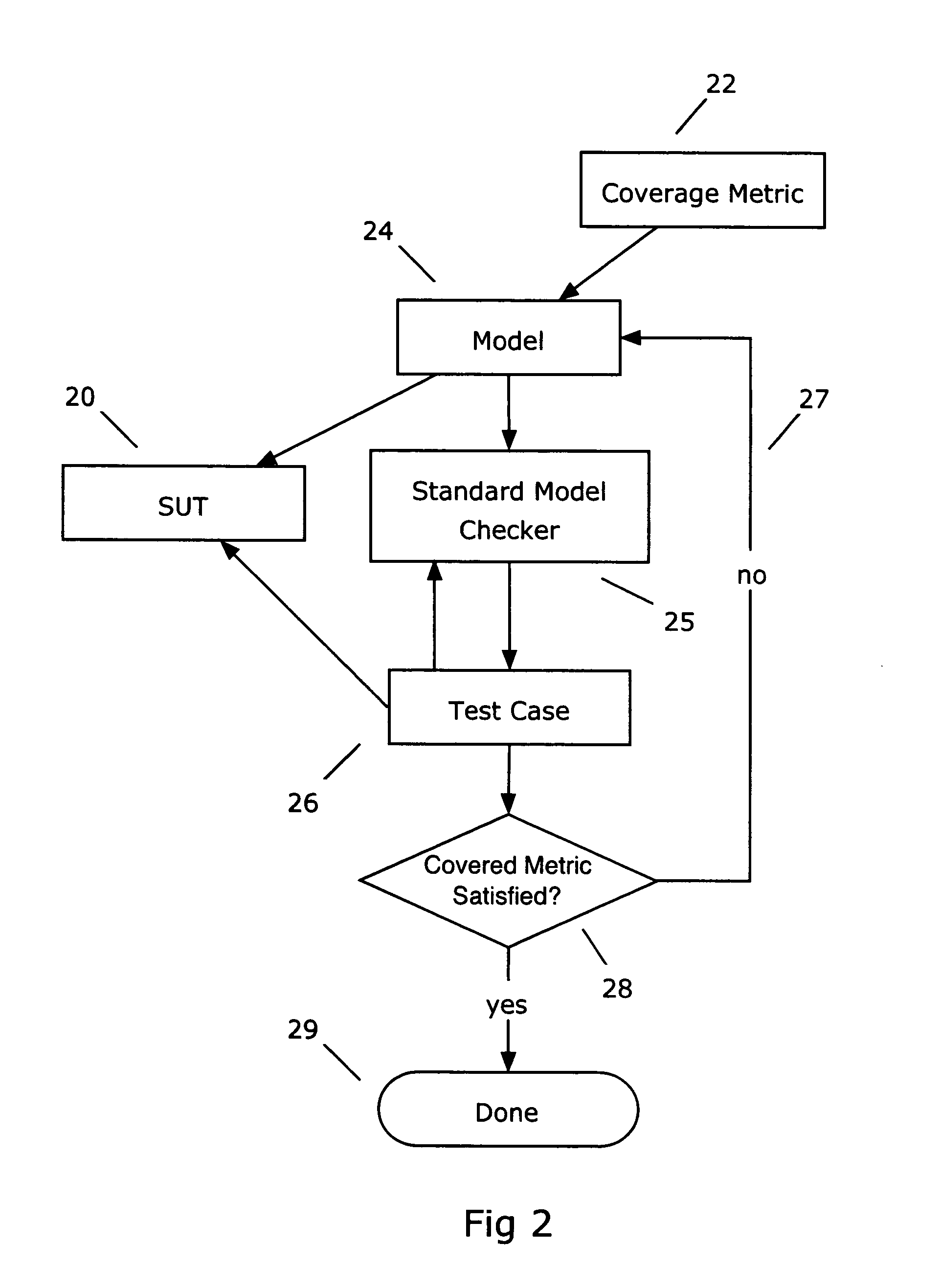Formal methods for test case generation
a test case and form factor technology, applied in the field of form factor test case generation, can solve the problems of high test coverage, high test cost, and inability to generate test cases, and achieve the effect of reducing the development cost of the system and rapid test case generation
- Summary
- Abstract
- Description
- Claims
- Application Information
AI Technical Summary
Benefits of technology
Problems solved by technology
Method used
Image
Examples
Embodiment Construction
[0023] Referring to FIG. 2, the inventive approach provides a method for generating tests for a system under test (SUT) 20 that satisfy a coverage metric 22 by generating a model 24 of the SUT; generating a first test case 26 with respect to the model; adding the first test case to a collection of test cases; checking the coverage metric 28 over the collection and if the coverage metric is not satisfied 27; reducing the model; and generating a second test case with respect to the reduced model. Rather than returning to the initial state and revisiting all intermediate states already visited, the new test case is extended from the last visited state.
[0024] The path 27 in FIG. 2 represents modification of the model in two distinct ways: slicing and extension. As regards any given set of test targets, slicing eliminates those parts of the model that cannot contribute to the satisfaction of the coverage goals. Slicing is performed internally each time the set of outstanding goals is re...
PUM
 Login to View More
Login to View More Abstract
Description
Claims
Application Information
 Login to View More
Login to View More - R&D
- Intellectual Property
- Life Sciences
- Materials
- Tech Scout
- Unparalleled Data Quality
- Higher Quality Content
- 60% Fewer Hallucinations
Browse by: Latest US Patents, China's latest patents, Technical Efficacy Thesaurus, Application Domain, Technology Topic, Popular Technical Reports.
© 2025 PatSnap. All rights reserved.Legal|Privacy policy|Modern Slavery Act Transparency Statement|Sitemap|About US| Contact US: help@patsnap.com



